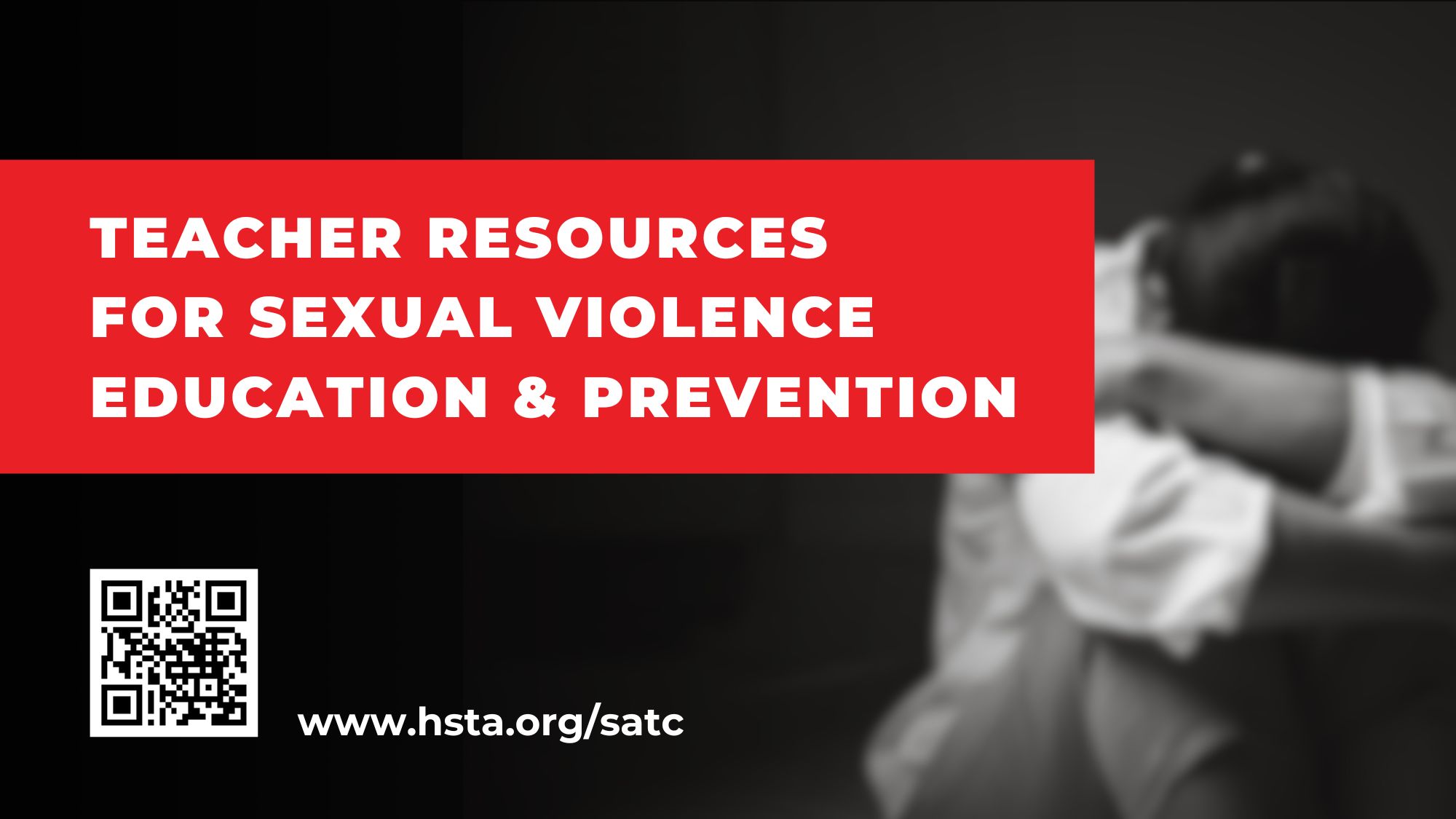Learn about age-appropriate K–12 curricula, other tools to build a community of safety for our keiki
Posted: September 8, 2023
One in four females and one in 13 males become victims of sexual violence before the age of 18. Ninety-three percent of these youth know their offender.
Sobering statistics from the Sex Abuse Treatment Center (SATC) highlight the need for trusted adults, especially educators, to support youth in situations of sexual violence, and educate them on awareness, understanding, and prevention.
“It’s funny because we teach students about ‘stranger danger,’ but when you look at the statistics, children are more likely to be a victim of sexual violence that’s perpetrated by someone they know than by a stranger,” said Llasmin Chaine, the Sex Abuse Treatment Center manager of education and community outreach. “Yet we continue with this massive education effort — and highlight incidents in the news — that warn kids about strangers who could kidnap them rather than teach them to protect themselves from real risks in their everyday lives.”
Chaine says part of the reason for this disparity is that adults “don’t necessarily feel they have the tools to engage in these conversations, or they’re nervous about it.
“The role of the trusted adult in a child’s life is so important, especially for a child who may be a victim of sexual violence and is looking for someone to talk to,” Chaine said. “It’s really important for these adults to build community and capacity around the issue so we can best support our kids.”
To equip educators with safety strategies and education around sexual violence and prevention, the Sex Abuse Treatment Center developed age-appropriate, K–12 curricula in conjunction with the Hawaiʻi State Department of Education.
“It’s really simple messaging — we don’t keep secrets about touching; nobody should touch our private parts unless it’s to keep us healthy — so that (students) have an understanding on topics like bodily autonomy in which they get to make the decision of how their body is touched, and then also to understand what sexual violence is and what safety rules should be respected,” Chaine explained.
In addition to in-person interactions, Chaine says she’s seen an explosion of digital sexual violence among youth over the past two years, which includes texts and social media messages containing sexualized or objectifying comments, or threats of violence or sexual violence.
Chaine says sharing nudes is also becoming normalized. Not only is the number of reports among youth rising, but the students involved are getting younger. “In one instance, a principal shared with us that a fourth grade student was caught exchanging nude photos with a schoolmate,” she said.
“I’ve had calls as young as elementary schools having students exposed to porn sites,” Chaine added. “At one school we responded to, students were grabbing each other and making inappropriate gestures. We came in and conducted online safety training, and taught them about boundaries, consent, and how to conduct themselves respectfully.”
Education is important because “kids just don’t have an understanding of the danger or the impulse control to really navigate the use of a smartphone when they’re really young, and so they find themselves getting caught in difficult situations,” Chaine said.
If you have questions or would like to request a school visit or planning meeting, please contact the Sex Abuse Treatment Center’s Prevention and Education Team at (808) 535-7600 or email satc.educator@kapiolani.org.
Learn more from the HIDOE:
Learn more from the SATC:

